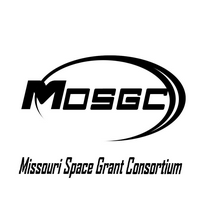Missouri Space Grant Consortium
Student Engineering Design Teams at MS&T

There were five student-lead engineering design teams supported at Missouri S&T in 2017-2018. These projects provide faculty-mentored authentic hands-on experiential learning opportunities.
Miner Aviation
Miner Aviation designs, builds, and operates a heavy lift aircraft to compete in the annual SAE Aero Design Competition. Missouri S&T competes in the Advanced class of the competition which focuses on the practical application of heavy lift aircraft. Teams must carry a fixed payload on the aircraft along with a humanitarian aid payload (sandbags) which must be accurately dropped on a target from a minimum altitude of 100 feet. The class also allows the use of composite materials and requires competitors to stream live video and telemetry data from the aircraft.
Solid-Fuel Rocket Design Team
The Missouri S&T Solid-Fuel Rocket Design Team provides its members a chance to apply concepts learned in class to real world situations through national competitions. The team operates as a small Aerospace company which does its own design, manufacturing, marketing, and budgeting; and also provides students with an opportunity for interdisciplinary cooperation in advancing quality designs of competitive aerospace vehicles. This year, the Rocket Design Team competed in the Spaceport America Cup hosted by the Experimental Sounding Rocket Association (ESRA). Before the teams are allowed to launch, each participant goes through an event cycle that involves rigorous research and testing, technical reports, and presentations. As part of the competition, teams must also integrate a scientific payload.
Liquid-Fuel Rocket Design Team
The teamâs current main project is designing and building a rocket engine test stand that will serve the team for many years. Structural design, instrumentation, control, and fluid flow of both gases and liquids all come together in the project. The test stand has been designed to accommodate a large range of possible future engines, with the largest producing 2,000 lbf of thrust. Once the test stand is built, the team will perform cold flow tests using water and inert liquid nitrogen (instead of fuel and oxygen) to verify its functionality of its first engine.
Mars Rover Design Team
The 2017-2018 Mars Rover Design Team improved upon their previous University Rover Challenge entry to stay ahead of the technical curve and lead the cutting edge with regard to their drivetrain design, making the suspension more durable and reliable, while also maintaining its terrain dominance and maneuverability. Additionally, they improved upon their science capabilities: an advanced collection mechanism that allows for rapid and accurate sample retrieval. An on board autonomous system allowed the rover to utilize on-board cameras and LIDAR system to map encountered terrain and aid in decision making in order to avoid hazardous obstacles.
The University Rover Challenge is an international collegiate competition, hosted annually by The Mars Society during the first weekend of June. The competition is held at the remote Mars Desert Research Station in Hanksville, Utah; thought to be one of the worldâs most analogous deserts to the unfamiliar Martian terrain.
Missouri S&T Satellite Research Team
he primary purpose of the Missouri S&T Satellite Research Team (M-SAT) is to develop new small satellite technologies that are tested in low Earth orbit (LEO) with smallsats designed, fabricated, and tested by Missouri S&T students, faculty, and staff. The design/build/fly process is complex, bringing concepts and ideas to reality for completion of flight-worthy satellites. Team members of M-SAT come from varying majors and academic levels. The team mimics industry practices in an academic interdisciplinary environment with assistance from faculty and staff.

